This was my first NamesCon conference. While I will be rolling out a number of articles and interviews on NameTalent over the coming days, this first post provides some personal insights from the conference.
While it is tempting to try to summarize all the sessions I attended, instead I decided to organize this post around actionable insights I extracted from a number of the sessions. These are by no means the only important takeaways from the conference.
Keep Extensive Entry Point Notes for Each Domain Name
Michael Cyger, of DNAcademy fame, was kind enough to share a number of points from his course in two NamesCon presentations. The first session, Domain Investing 101, held on the Sunday morning, dealt with the 6 basic types of domain names along with the 23 domain name characteristics (he just had time to deal with the six most important of these during the session). In the follow up session Domain Investing 201,Turning Your Domain Investing Hobby Into a Profitable Business, he dealt with how to make sure you are making smart decisions with respect to your domain business.
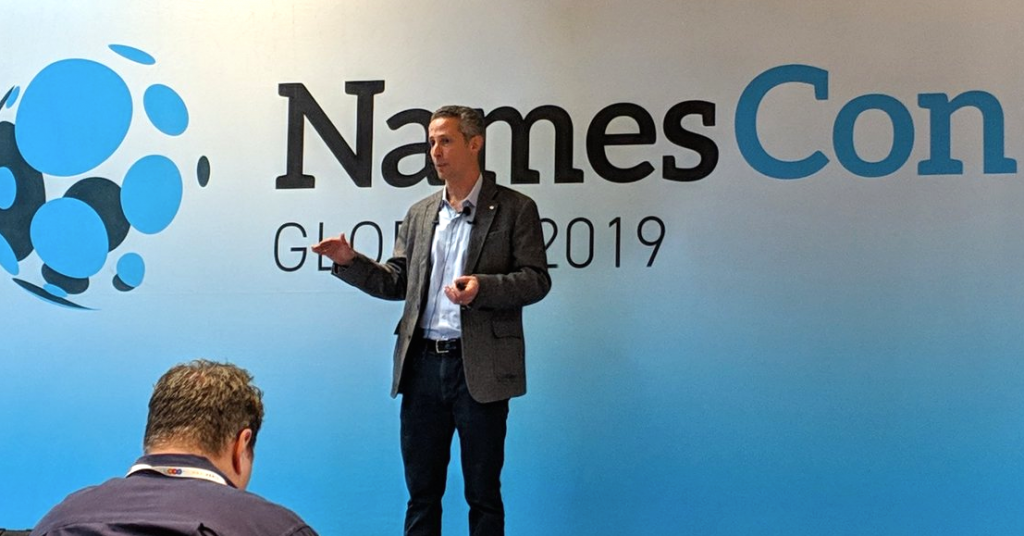
While there were numerous actionable points in these two sessions, one that stood out for me as was the importance of making really extensive notes at the point of acquisition of a domain name. Michael shared the sheet that he personally uses and it is really in-depth. As well as the type of domain name, and price paid, answers are provided for each of the 23 characteristics. Right at acquisition he estimates the price that he sees obtaining for the domain name.
While I keep extensive records in spreadsheets, including aspects such as price paid, registrar, automated worth estimates, expiry data, notes re search popularity and advertiser characteristics, I have not, so far, had a separate sheet for each domain name. I like the idea and plan to make up a form suited to my own take on domain name investing.
A related insight Michael shared was the importance of reviewing the information on the sheet at least annually. Has your expectation for the worth of the domain name gone up or down? He mentioned this within a discussion of domain hygiene and the idea of honestly and regularly assessing whether each domain in your portfolio is worth keeping.
Thanks to Michael for two great sessions, filled with insights and ideas for more structured, evidence-based and successful domain investing.
It’s Human to Human
While Haseeb Tariq’s late Sunday afternoon session entitled Learn How to Price and Sell Your Portfolio had many takeaway messages, the one that resonated with me is summarized by “There is no more B2B or B2C; it’s H2H–human to human.”
Most effective businesses are ultimately driven by the effectiveness of their human interactions. Influencers, both those with huge followings and larger numbers of nano-influencers who each operate within a much smaller sphere, play critical roles. He estimates that influencer marketing will reach $10 billion dollars in value by 2020.
While I was familiar with the ideas of influencers prior to NamesCon, this session heightened my interest in the topic. I also liked the acronym by used – STEPPS (social, triggers, emotional, public, practical and stories).
So what was the actionable message I extracted from this presentation? I think each of us have potential to substantially strengthen our personal spheres of influence. I want to learn more about personal branding, and develop a plan on doing it more effectively. I see real estate agents doing this pretty effectively, and I think that we can learn from their model.
Data Data Data
Bhavin Turakhia, the CEO of Flock, Zeta and Radix, delivered an inspiring and optimistic keynote with a number of key points. While I knew that registry operators used data extensively, I had not fully comprehended how extensively. For every single domain name they track a huge number of variables: everything from price paid, how the domain is used, whether it has email accounts, how many links in and out are in the associated website, how many pages in the website, etc. They do all of this in an effort to predict the likelihood of renewal, which is key to registry success.
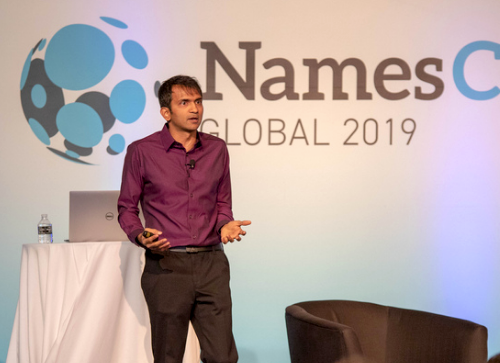
Image courtesy of NamesCon.
Bhavin also provided a fascinating glimpse on how Radix used intensive data analysis to move from 30,000 dictionary words to1000 possibilities then eventually to 31 finalists for possible new extension strings. Ultimately these resulted in the 9 strings that Radix successfully obtained. For each string they had a quantitative projection indicating at what price point it made economic sense for the company.
As he repeated a few times during the presentation “Every decision we make is data driven.” Additional insights on the importance of data came from the multiple perspectives offered in a panel called Data Rules held on the Tuesday morning.
“Every decision we make is data driven.”
–Bhavin Turakhia
I never plan to run a registry, so what personal actionable insight did I obtain from these sessions? As Bhavin was speaking it occurred to me that I am currently missing many opportunities to better log data that may provide insights for my domain investing. For example you should log the dates you place the domain name on different marketplaces, the prices at different points, all queries you received, traffic to the sites, etc. Ultimately these data may allow me to more accurately predict sales success for future domain names.
Catch All Email
I attended three of the five options at the Expert Round Tables on the closing day of NamesCon. For those who left the conference early, you missed one of the most valuable parts in my opinion. With typically only about 10 people at each roundtable you had a great opportunity to ask questions and interact with experts.
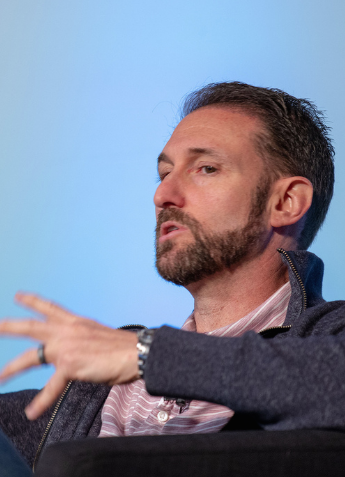
Image courtesy of NamesCon.
One of the expert tables I sat in on was led by the highly successful domain investor Braden Pollock of Legal Brand Marketing. While he shared many insights, such as the importance of getting pricing right, one actionable tip he shared was to use a catch-all email to capture email that is going to your domain name. This not only will put you in touch with people who might be inquiring about the domain name by guessing an email address, but also may get email intended for a third party, By forwarding this to the intended recipient, this will help them see why they should upgrade to this domain name.
I have never implemented catch-all email before, but plan to try it on some of my domain names. There was also a helpful discussion around possible legal or ethical issues associated with implementing catch-all email.
Use Appraisals Effectively
One of the most anticipated sessions at NamesCon 2019 was that by Paul Nicks (Afternic / GoDaddy) entitled Domain Trends and Insights. I will be reporting more fully on this session in a separate article, but wanted to mention a couple of actionable items I took away from it.
He pointed out first of all that this has been a very healthy year for third-party domain sales, at least according to GoDaddy/Afternic data. Inquiries were up 29% and sales up even more, 41% year over year.
He pointed out that the data clearly showed that automated domain appraisals resulted in more sales closing. The week they introduced these to the marketplace there was a statistically significant uptick in sales. He also presented data showing that about 89% of the time sales are within $2000 of the appraisal value, and within $1000 about 59% of the time. These may not be as significant as first seems, but that is a topic for another article.
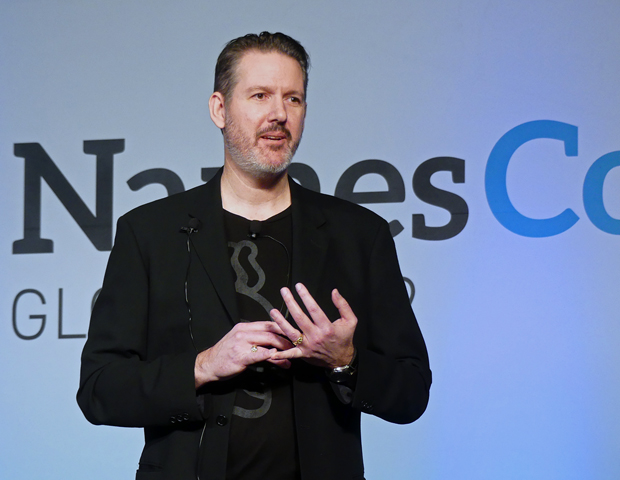
Whether we personally like or trust automated domain appraisals, the data presented showed that they do matter to many end-users. As an actionable insight I plan to more fully use these data in my own domain name sales efforts.
Model Your Business
As readers will have noted, I am a fan of using data to make informed domain decisions. Paul Nicks introduced a numerical model for a career in domain investing that I found interesting, and I plan to develop a modified form of it to obtain multi-year projections for my own domain investing.
The model that Paul Nicks presented assumes that a domain investor purchases domains at average prices of $50 to $75, acquiring 3 to 6 domains per day. It is assumed that the annual sell through rate is 1% (i.e.any one domain has a 1% chance of selling in any one year) and that the average retail sales price is in the range from $2500 to $3500. According to the model the domain investor will lose money during the first three years, and will only do well enough to make a living from domain investing starting in the sixth year.
According to the model the domain investor will lose money during the first three years, and will only do well enough to make a living from domain investing starting in the sixth year.
The Power of Stories
Prior to NamesCon I had shared on NamesTalent that I was particularly looking forward to Kate Buckley’s keynote on Storytelling. That session certainly did not disappoint. She gave an eloquent, insightful and entertaining presentation.
There were many potential takeaways from the session (I will be writing a later article on just this presentation). Sometimes we don’t fully appreciate that a name by itself lacks emotional currency, that the data about the domain name is not sufficient. It needs some kind of story to propel it to become a valued asset in the mind of the potential end user.
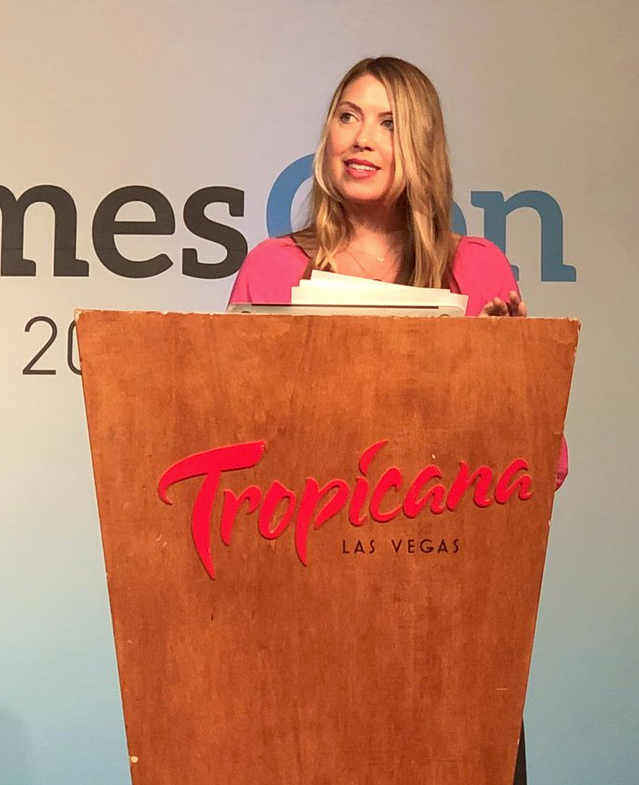
Image courtesy of NamesCon.
Her presentation was rich with fantastic quotes. One of my favourites was “Stories help us know who we are, where we’ve been, and a route to where we want to go.” This summarizes for me an important takeaway. For a domain name, after you identify potential purchasers, learn their story, where they’ve been and where they might want to go. Then develop some sort of anecdote or story to show how this domain name can help them reach that point. I realize this is challenging to do, but have set my sights on doing it for at least a handful of names in my portfolio in 2019.
“Stories help us know who we are, where we’ve been, and a route to where we want to go.”
– Kate Buckley
The First Pitch
Another actionable insight I took away from Kate’s presentation was her answer to a question on how you make that first contact. She stressed that it can be at various places – chance meetings at events, on social media, through mutual contacts, by email, etc. In answer to how the contact is made, she stressed to be in tune to the preferences of the person you are dealing with. The first contact short, polite, and businesslike – usually only a few sentences. Also, while telephone calls are usually part of the overall process, not always, that the era of an initial cold call is long over. The actionable message I took from her presentation was to be alert to the universe of possible ways to make that first short pitch.
Think Like The End User
While NamesCon 2019 was a wonderful conference, to me it was light on actual end users. I think the better we come to know the thought processes of end users, the better we will be able to serve them. I really found the session on Tuesday where Blake Janover (who purchased and developed Home.Loans) and Mike Kugler (owner of Vacation.Rentals) described their experiences enlightening.
In both cases they did not just step up and pay $500,000 for their first domain name. In Blake’s case he had success with the much less costly MultiFamily.Loans domain name (as well as others) and that gave him the confidence to pay the big price for Home.Loans. For Mike, he had already picked up some other rentals names like Boat.Rentals.
So what was my takeaway from this session? I think it helps a lot in promotion of a domain name if you can show success with a similar (in some sense) domain name in a situation that is personally relevant to the potential purchaser.
We must think like an end user. While I knew this prior to NamesCon, there is no doubt the message is now more deeply ingrained. As part of your background research, try to find domain name examples that will resonate with the end user. For example, if one of their competitors recently upgraded their domain name that will make the case stronger for this end user also upgrading. If a competitor, supplier, or well known regional business has moved to a new extension, that will help pave the way for others to consider such a move.
Summary
Here is a summary of the takeaway actionable insights that I covered in this report.
- Make and keep extensive notes about each domain name you acquire, including your anticipated sales price. Review these documents periodically.
- Human to human is the most important type of interaction. Think about your personal brand and how you can strengthen personal interactions.
- I plan to do a better job of logging all data for each domain name that I have for sale, including dates the name was placed on different marketplaces, where parked, price changes, queries, traffic, etc.
- Starting with the domains I consider my most popular and valuable, I plan to implement catch-all email.
- I already use appraisals fairly extensively, but based on the GoDaddy / Afternic presentation I plan to present the data as part of a prospectus for each domain name.
- In due time I plan to develop a multiple year model for my domain investing along the lines of the one Paul Nicks presented at NamesCon.
- I want to think more deeply on how I can plant that first seed for an organization that might be interested in one of my domain names, and what my personal brand is and how I can communicate that better.
- I don’t think it is reasonable to do this for all of my domain names , but for a minority I plan to more fully research how they might be used by end users, and try to express that message through a short story that I hope to get in front of prospective end users.
- I plan to develop documents for domain names in a certain niche that will help end users see how others have employed domain names to move their organizations forward.
Concluding Thoughts
As mentioned, I have a number of interviews and stories in the works based on people I met at NamesCon 2019. Also, I plan to follow up this post with one on how NamesCon might be an even better conference. I would like to thank the organizers and all of the presenters who made NamesCon an incredible experience.
The photos in this article are provided by the organizers of NamesCon, as is the logo at the start of this article.




Great article, Bob! It was nice meeting you at NamesCon. Keep up the great work on the blog and your domain investments.
Thank you Bob. Good to hear from your experience at Namescon.
Thanks very much Bob for your fantastic insights and summary of the NamesCon sessions, plenty of great takeaways there to learn from.
Thank you so much for the kind comments. NamesCon was an amazing experience, and while the most important part was the people you met, there were many great keynotes,, panels, round tables, and other sessions. Thanks for letting me share some snippets with you!
Bob- excellent write-up and summary! It was great to meet you at the Godaddy meetup. Looking forward to your follow-up articles!
Mike
good article but you left out wearing funny hats. funny hats can be great for domain sales because it gives people a reason to talk to you.
[…] Bob Hawkes' Takeaway Actionable Items from NamesCon 2019 […]
Thanks for this write-up! Very insightful for someone who didn’t make Namescon.
[…] 2020 for personal reasons, but really enjoyed NamesCon 2019. You can read about some of the ideas I took away from NamesCon 2019 in this NameTalent post. […]